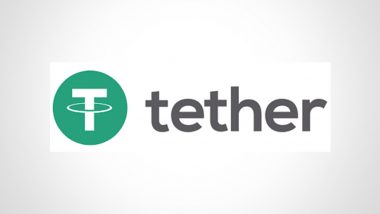The enormous returns generated by Bitcoin and other cryptocurrencies over the past few years have compelled a lot of investors to put their money in the digital currency markets. However, cryptos are volatile and risky as they are not regulated by any central authority. Plus, their price is entirely dependent on the demand and supply of the coins. So, what can investors do to safeguard their digital currency portfolio against such volatility? The alternative is to invest in stablecoins. How a Leading Digital Bank Is Getting Consumers Comfortable With Bitcoin
Stablecoins are digital currencies that are backed by assets such as fiat currency(issued by the government), other cryptocurrencies or gold. The value of stablecoins does not fluctuate as much as the other cryptos such as bitcoin or ether and they can also be made stable using computer algorithms.
Stablecoins are digital assets that have a stable valuation like a fiat currency but also provide utility and mobility of a cryptocurrency. Put simply, they can be seen as the bridge between a volatile cryptocurrency and a stable fiat currency. There are mainly four types of stablecoins.
Fiat-collateralized stablecoins are the foremost variant of stablecoins you would come across. They have the backing of a fiat currency such as Euro, GBP, or the US Dollar. Fiat-collateralized stablecoins are the simplest stablecoin types with a 1:1 ration backing. The 1:1 ration implies that one stablecoin would be equal to one unit of currency such as a dollar or one Euro.
The value of these stablecoins is pegged to the collateral that backs them. For example, if a stablecoin is backed by a fiat currency, say the US dollar, it means every stablecoin is equal to $1. Hence, if the issuer of the stablecoin has $2 million in reserve, they can only issue two million stablecoins in exchange for it.
Crypto-backed or on-chain stablecoins are backed by another asset, typically other cryptocurrencies, such as ether or bitcoin. The value of the stablecoin is always proportionate to the value of the underlying cryptocurrency. These crypto-backed stablecoins use smart contracts and do not need an issuer or central custodian.
Commodity-backed stablecoins have the backing of different types of interchangeable assets such as precious metals. The most common commodity used as collateral for commodity-backed stablecoins is gold.
Investors can also redeem their investment in stablecoin and get physical delivery of the collateral. Therefore, there is a need for a custodian. However, token redemption is only possible for set measurements of the collateral.
An algorithmic stablecoin is not backed by any collateral. But, it uses a special algorithm to maintain the prices of the coin. If the price of the stablecoins falls below the price of the fiat currency it tracks, the algorithm reduces the number of tokens in circulation.
As of now, stablecoins are working with four distinct models which follow different collateral structures. The different types of collateral used for stablecoins define their types, such as fiat-backed, commodity-backed, crypto-backed, and non-collateralized stablecoins. Each stablecoin variant has its unique characteristic, i.e., the collateral for backing the stablecoin. These Indian Crypto-Startups Are Making a Buzz Worldwide
In several ways, stablecoins may not be like other crypto investments. They are designed to stay put in terms of value. This means that while they will not be a fall in value, it will not rise either. This can be understood by comparing the USD coin to the Bitcoin. Since its inception, the USD coin has hardly fluctuated from its $1 value. Bitcoin, on the other hand, was valued at $4,000 in 2019, and at $60,000 by May 2021.
(The above story first appeared on LatestLY on Jan 09, 2022 02:40 PM IST. For more news and updates on politics, world, sports, entertainment and lifestyle, log on to our website latestly.com).













 Quickly
Quickly



